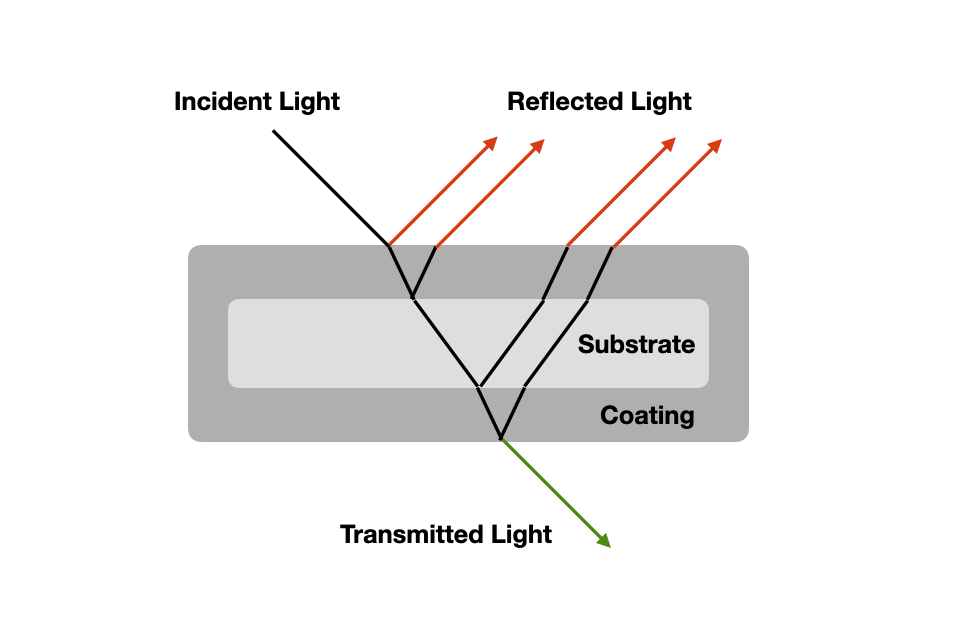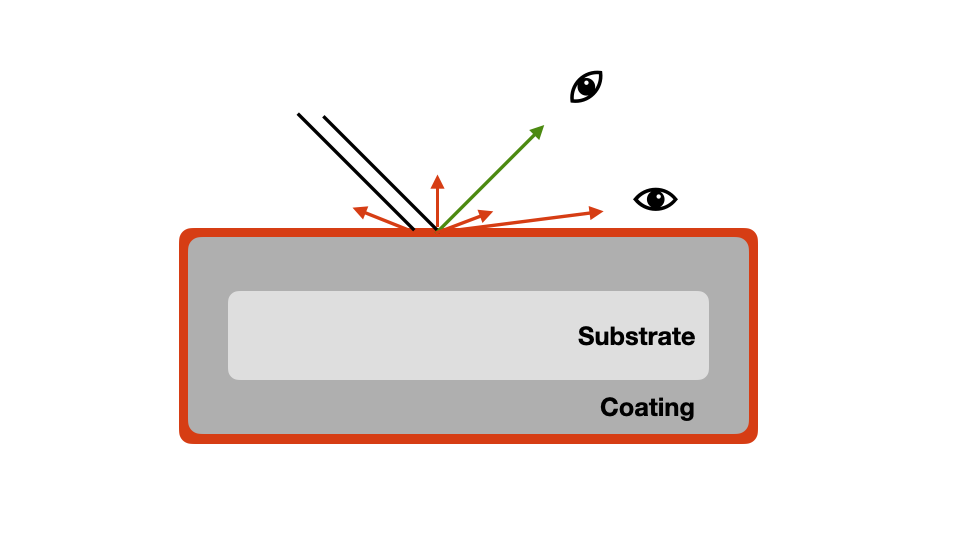How to Select Pearlescent Pigments for Cosmetic Applications?
Pearlescent pigments, with their unique optical properties and safety profiles, have become essential ingredients in cosmetic formulations. Widely used in lipsticks, eyeshadows, nail polishes, and foundations, they impart dynamic visual appeal or soft-focus effects to makeup while continuously expanding the boundaries of cosmetic aesthetics through technological innovation. This article systematically introduces the selection process for pearlescent pigments based on materials science principles and innovative practices.

Structure Diagram of Pearlescent Pigment
Pearlescent pigments typically feature a layered structure with metal oxide-coated substrates, where types of substrate directly determine pigments’ optical performance and cosmetic makeup effects. YunZhu Cosmetics-Grade Pearlescent Pigments offer four substrate-based pigment solutions:
Pigment substrate | Natural/Synthetic Mica | Synthetic Mica | Glass | Silica |
Substrate Highlight | Natural mica, may contain impurities or trace heavy metals | Synthetic substrate, more pure & transparent than natural mica | Synthetic substrate, high transparency, smooth surface | Synthetic substrate, even substrate thickness, high transparency |
Available Pigment Colors | Silver, Interference, Gold, Metallic, Black, Chameleon effects | Silver, Interference, Gold, Metallic, Black, Chameleon effects | Silver, Interference, Gold, Metallic, Chameleon effects | Chameleon, Magnetic chameleon effects |
Available PSD | Broad options | Broad options | Limited to medium to large PSDs | Broad options |
Pigment Sparkle intensity with same PSD | Standard | Standard | High | Standard |
Pigment Chroma | Standard | Medium | High | High |
YunZhu Brand Lines | YunSynMica Glaring Effect Pigments YunSynUltra™ Crystal Effect Pigments YunFlux™ Chameleon Effect Pigments | YunGlas™ Diamond Effect Pigments YunGlasLux™ 3D Diamond Effect Pigments |
The table demonstrates substrate selection as the primary driver of pearlescent pigment performance. For optimal cosmetic formulations, align substrate properties with target chromatic intensity, sparkle level, and optical depth.
• Natural Mica: Delivers classic pearlescent luminosity but contains naturally occurring trace heavy metals that may pose challenges in meeting heavy metal compliance standards. YunMica Pearlescent Effect Pigments address this by employing a hybrid natural-synthetic mica substrate, effectively minimizing heavy metal variability while maintaining premium pearlescent performance.
• Synthetic Mica: Higher purity and transparency enables whiter silver or enhanced chromatic effects. YunSynUltra™ Crystal Effect Pigments exhibit superior brightness and chromatic purity compared to YunSynMica™ Glaring Effect Pigments due to advanced multi-layer coating.
• Glass: High reflectivity from smooth surfaces creates intense sparkle. YunGlasLux™ 3D Diamond Effect Pigments employ ultra-thin glass for greater transparency and multi-dimensional depth, while YunSil™ Silver Gilt Effect Pigments combine glass with silver coatings for metallic textures and opacity.
• Silica: Uniform substrate thickness combined with advanced PVD coating technology enables precise control of interference light, delivering vivid color-shifting effects visible even under low-light conditions. Representative products include YunMulti™ Super Chameleon and YunCatEye™ Magnetic Chameleon Effect Pigments, demonstrating enhanced chroma and vibrancy when compared to YunFlux™ Chameleon Effect Pigments manufactured with glass or mica substrates.
II. Particle Size Distribution and Optical Modulation

Pearlescent pigment particle size vs light scattering and reflection
For pearlescent pigments sharing the same substrate, particle size distribution serves as the critical parameter for modulating optical performance. Smaller particles enhance light scattering while reducing reflection, yielding lower gloss and higher hiding power. Conversely, larger particles diminish scattering and amplify reflection, delivering high sparkle, elevated gloss, and reduced opacity.
YunZhu Cosmetics-Grade Pearlescent Pigments provide a versatile particle size distribution range. Select optimal sizes based on hiding power and gloss requirements. Key guidelines:
• Smaller particles (D90 ≤25µm): Enhanced light scattering with subdued reflectivity, ideal for satin finishes and high opacity (e.g., foundation liquids mimicking natural skin radiance).
• Medium particles (25µm < D90 ≤60µm): Balanced pearl luster and hiding power.
• Larger particles (D90 >100µm): Intense starlight sparkle for high-impact applications.
Strategic blending of particle sizes enables layered effects combining silk-like sheen and celestial brilliance.
III. Pearlescent pigments’ Color Modulation Technologies & Selection Guideline
Pearlescent pigments derive color from light interference or hybrid interference-absorption mechanisms. The precise engineering of metal oxide coating layers on substrate enables accurate color modulation, achieving effects such as silver-white, interference, gold, metallic, and color-shifting (chameleon) effects.
To meet the color-matching demands of cosmetic applications, Yunzhu has developed Colored Pearlescent Pigments by mixing pearlescent powders with absorptive pigments, achieving dual optical effects that balance "luminous sheen with solid coloration" and "translucency with coverage" in cosmetic formulations.

Carmine-Tinted Interference Green
The unique appeal of colored pearlescent pigments lies in their ability to merge interference-reflected light from pearlescent layers with solid-color absorption from pigments. This synergy creates dynamic color variations depending on viewing angles, producing a Dual-Tone Color Effect:
• At certain angles, the base color of the absorptive pigment dominates.
• At others, the interference color of the pearlescent layer overlays the base, generating shimmering highlights.
You may select either colored or non-colored pearlescent pigments based on application requirements. However, when choosing Colored Pearlescent Pigments, the stability of the pigment during both manufacturing processes and product storage must be considered. More information is shared in following topic.
IV. Pearlescent pigments’ Formula Compatibility in Cosmetic Applications
Metal oxide-coated pearlescent pigments generally exhibit excellent stability in cosmetic applications, except Fe₃O₄-coated variants, which are unstable in acidic systems and may react with phosphates. Special attention is required for Colored Pearlescent Pigments. When selecting colored variants, verify the stability of incorporated dyes/pigments to prevent discoloration, fading, or loss of luster during production and storage. Examples include:
• Carmine-colored pigments: Limit processing temperatures to <100°C; avoid alkaline systems (pH >7). Light-sensitive; require opaque packaging.
• Ferric ferrocyanide-colored pigments: Susceptible to instability in aqueous systems with alkaline or some salts.
V. Innovative Hybrid Optical Design: Cat-Eye Chameleon Applications
By integrating cat-eye directional alignment and angle-dependent chameleon color-shifting within a single pigment, YunCatEye™ Magnetic Chameleon Effect Pigments transcends conventional aesthetic boundaries through material science innovation, delivering groundbreaking visual solutions for makeup products.
• Nail Art: Apply magnetic alignment tooling to pre-position pigments prior to UV curing, simultaneously producing cat-eye light bands and angle-dependent color-shifting chameleon effects.
• Lipstick Design: Imprint dynamic optical textures/patterns on bullet surfaces via magnetic molds, enhancing lip product dimensionality.
• Pressed Powder: Utilize magnetic-field-assisted compression to create 3D-patterned finishes with depth-enhanced optical motifs and dual light-channeling effects.
This multidimensional optical innovation not only expands the boundaries of visual expression in cosmetic makeups but also equips brands with technical leverage to craft eye-catching, signature products. By transforming dynamic light interplay and iridescence into brand-defining visual signatures, YunCatEye™ Magnetic Chameleon Effect Pigments empowers market differentiation through science-driven artistry.
VI. Safety and Regulatory Compliance
Cosmetic development is anchored in safety. YunZhu Cosmetics-Grade Pearlescent Pigments rigorously select INCI-compliant raw materials, implement dual controls for heavy metals and microbial limits, and ensure adherence to human-contact safety standards.
For adherence to ultra-low heavy metal control standards per the German Federal Office of Consumer Protection and Food Safety (BVL), YunLHM™ Maria Effect Pigments represent the compliant solution.
Conclusion
In summary, effective selection of pearlescent pigments for cosmetic applications requires a systematic approach:
• Safety First: Prioritize substrate purity and regulatory alignment.
• Optical Engineering: Align substrate, particle size, and color technology with target effects.
• Formula Synergy: Ensure pigment stability under processing and packaging conditions when Colored Pearlescent Pigments or Fe₃O₄-coated pearlescent pigments are considered for formulations.
• Optical Innovation: When considering tooling to achieve dual optical effects for final products, YunCatEye™ Magnetic Chameleon Effect Pigments will be the perfect solutions for multidimensional optical innovation.
Overall, by translating material properties into visual and functional advantages, brands can leverage YunZhu Cosmetic-grade Pearlescent Pigments to elevate product differentiation in competitive cosmetic markets.




